Abstract
This paper employs new statistical techniques to further analyze the flight control system of grasshoppers. The quantitative results confirm some hypotheses which arise from previous studies of this system. After decapitation and ablation of wing proprioceptors, stimulation of the nerve cord at random intervals can elicit a coordinated response closely resembling the normal flight motor output pattern. The coordinated response begins only after many stimuli and there are usually many cycles of after-discharge. The frequency of the cyclic output is rather low and may be increased only slightly by large increases in stimulus frequency. Input from the stretch receptors is necessary to attain normal wingstroke frequency. Frequency of wingbeat rises with a time constant of about 2 seconds (or about 25 wingbeats) when stretch receptor stimulation is initiated. Frequency decay after cessation of stimulation has about the same time constant. No special phase relationship between stimulation and output is necessary for the increase in frequency or maintenance of normal pattern. When input frequency is adjusted as closely as possible to output frequency it is still not possible to force the output to maintain a particular phase with respect to the stimulation, all phase relationships still occur. In some animals all phases occurred with equal probability; in others a particular phase was preferred. When there was a strong phase preference the normal output pattern was disrupted.
Full text
PDF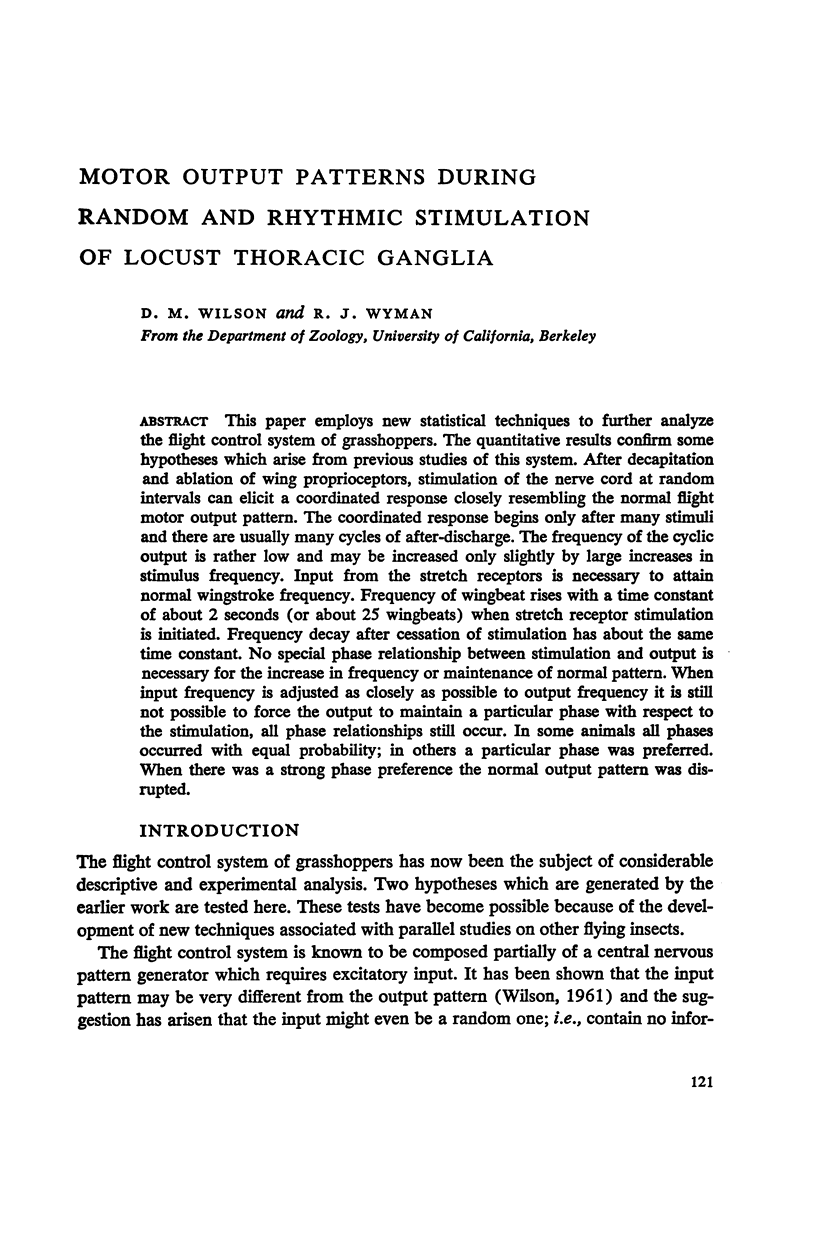
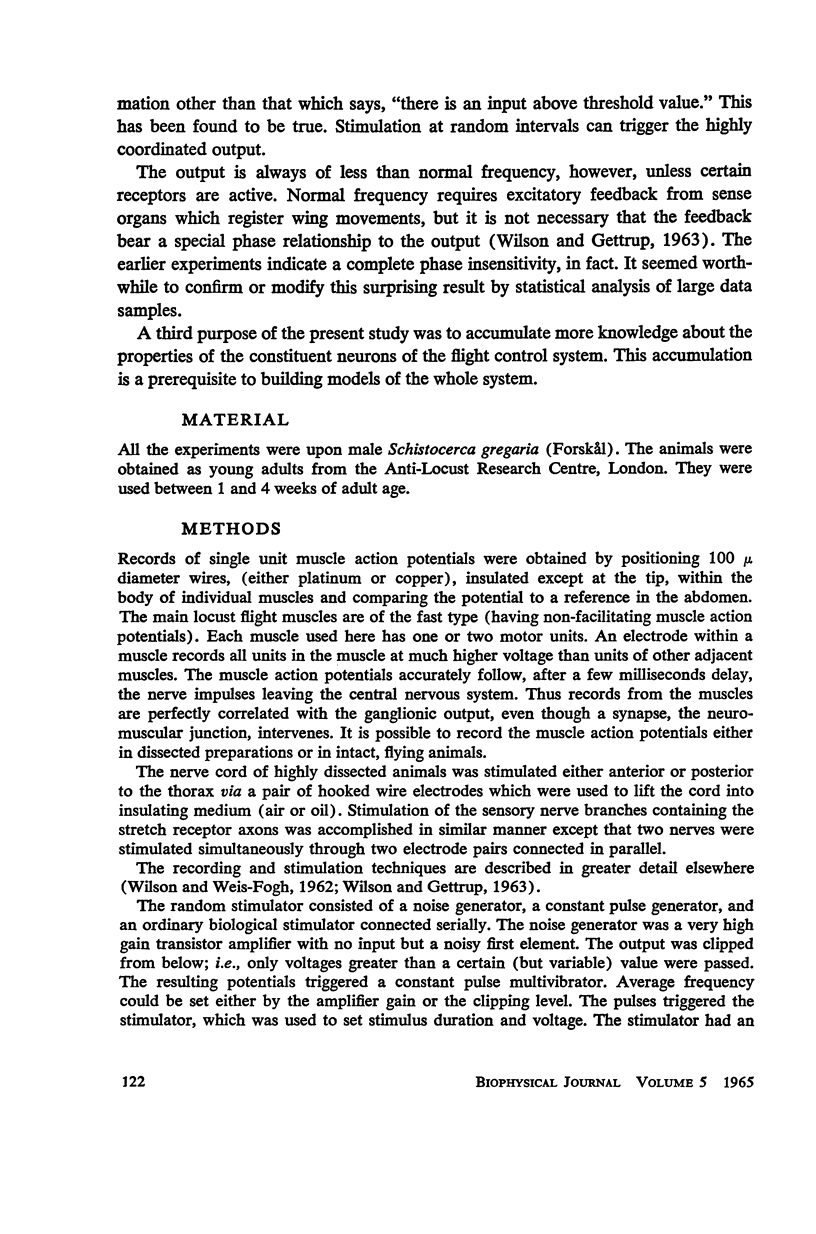
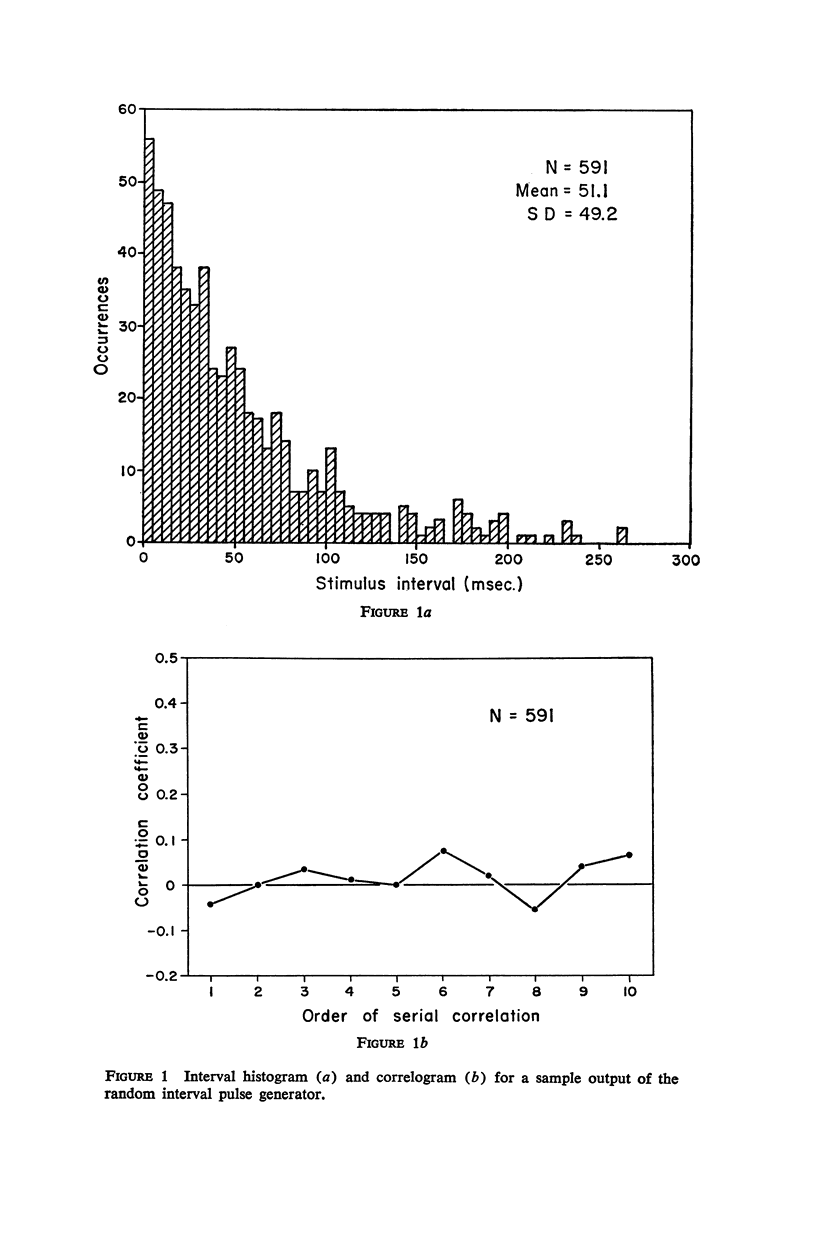
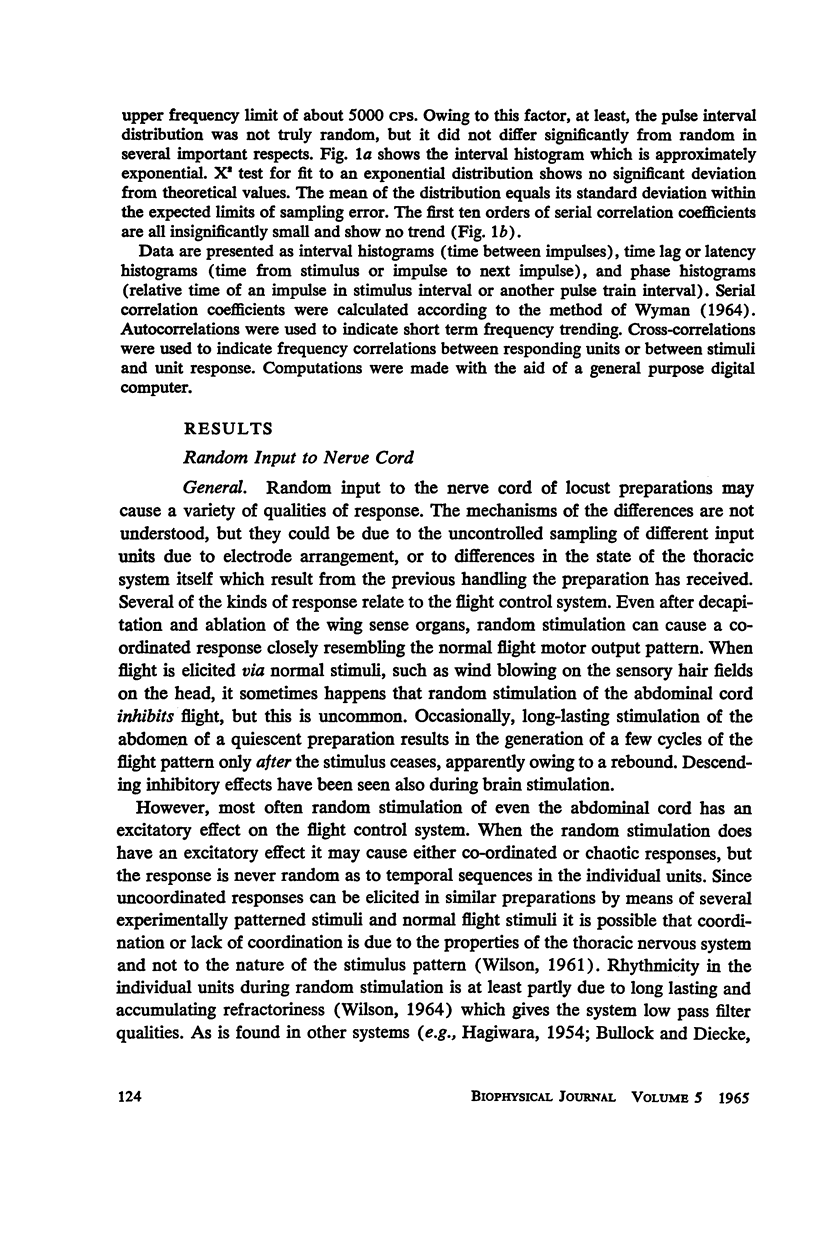
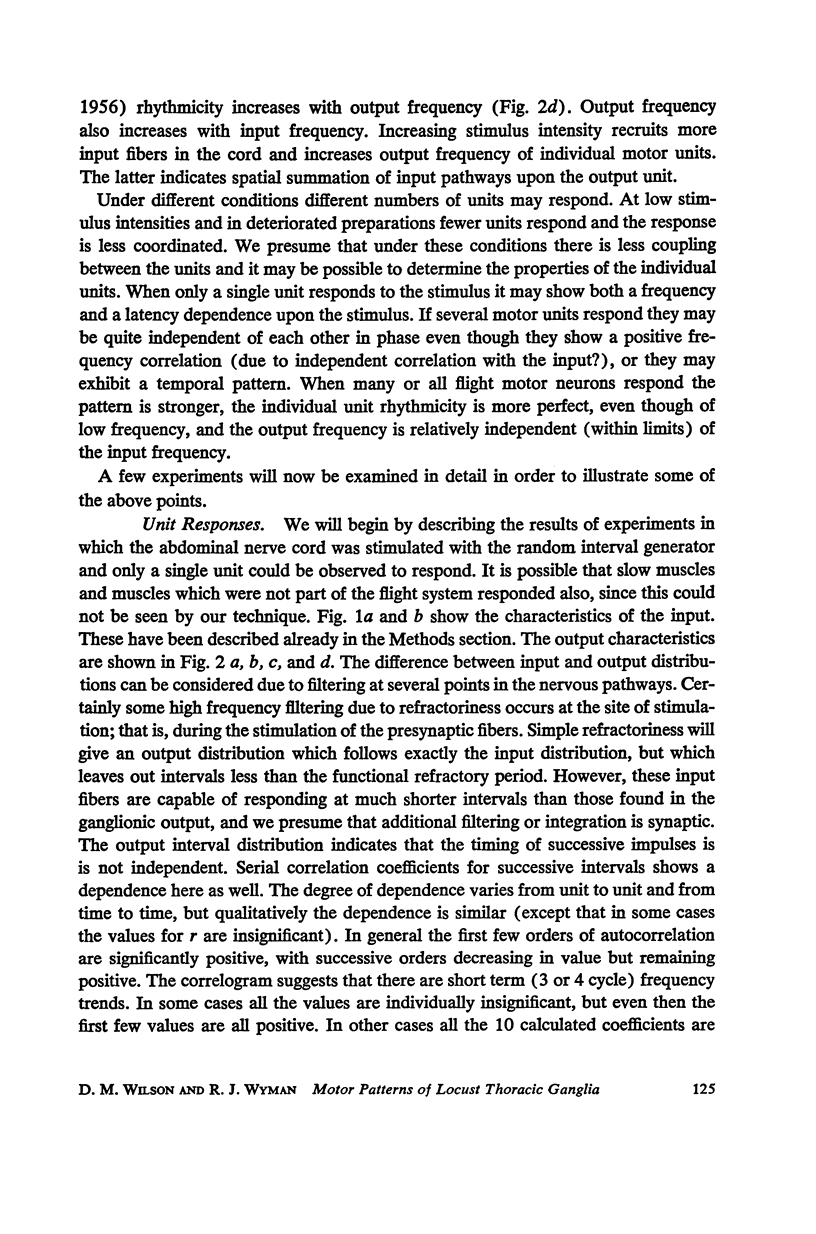

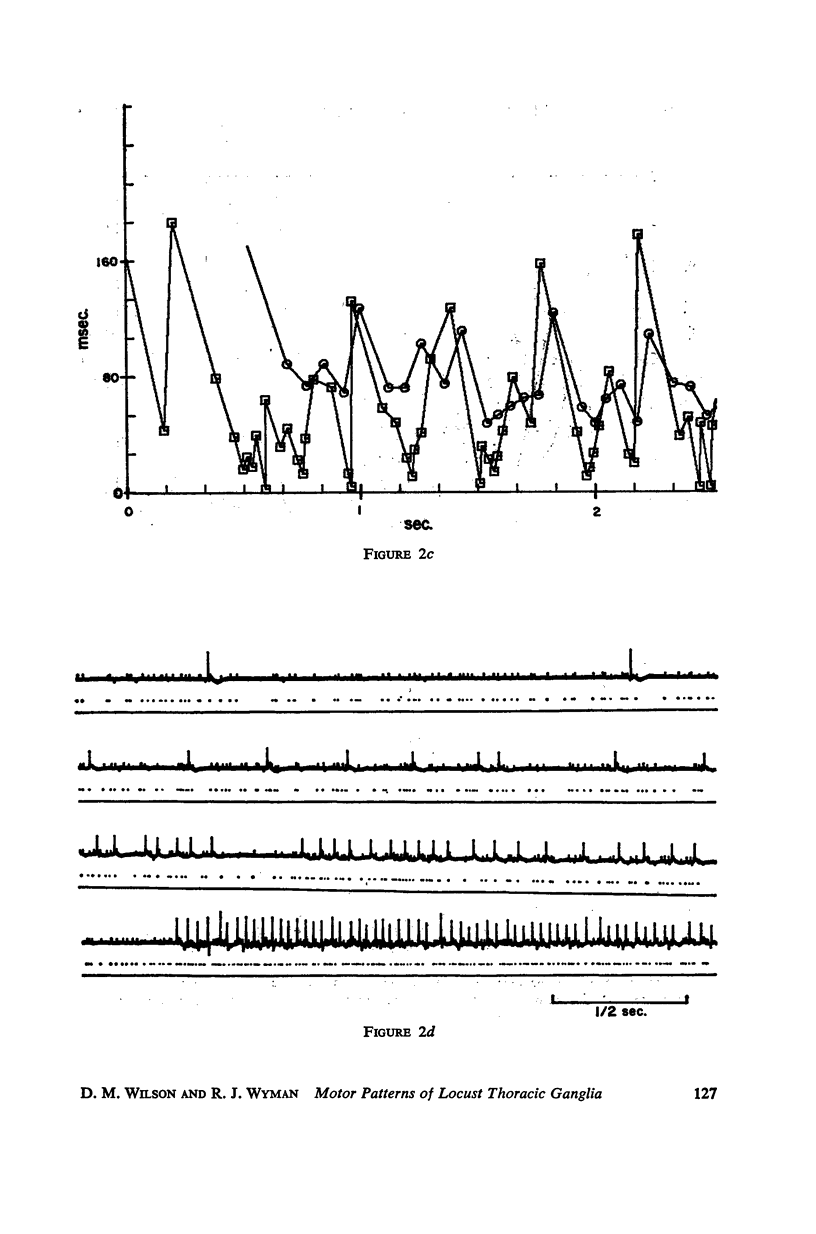
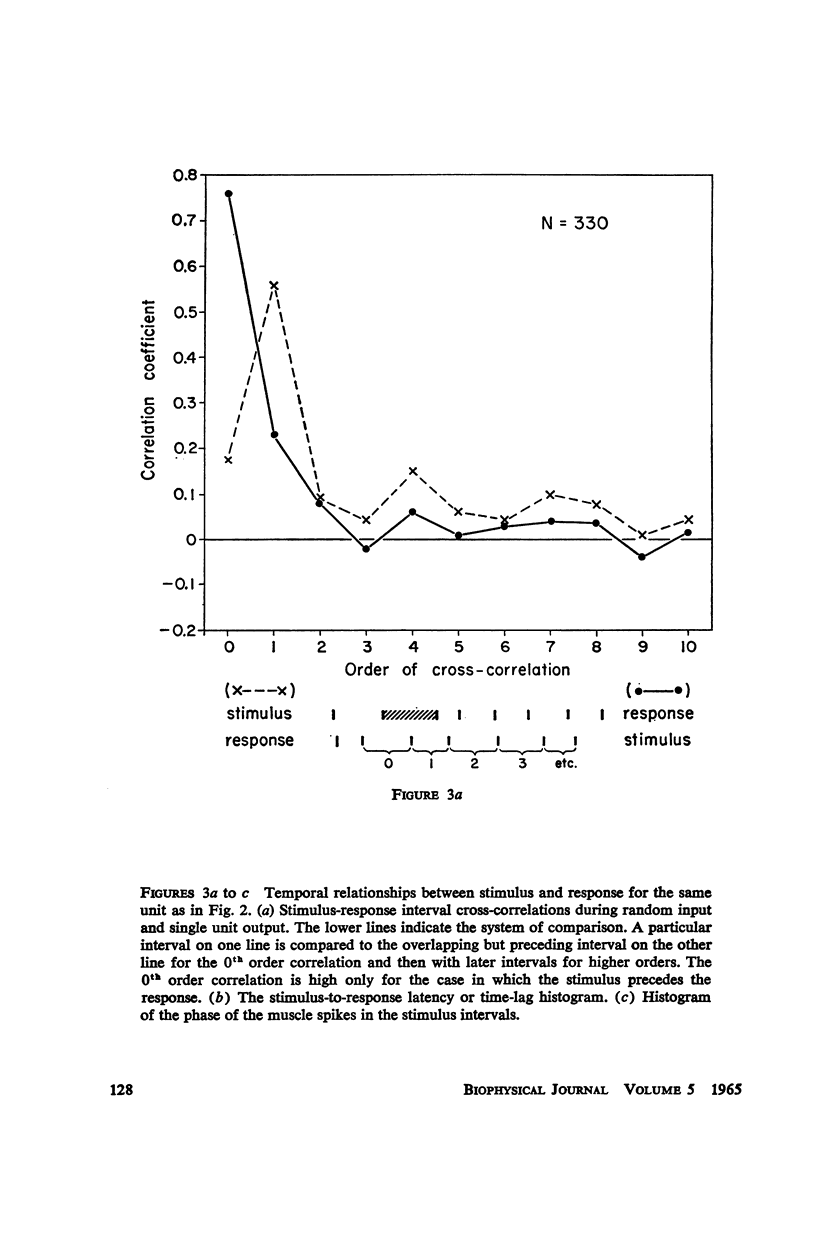
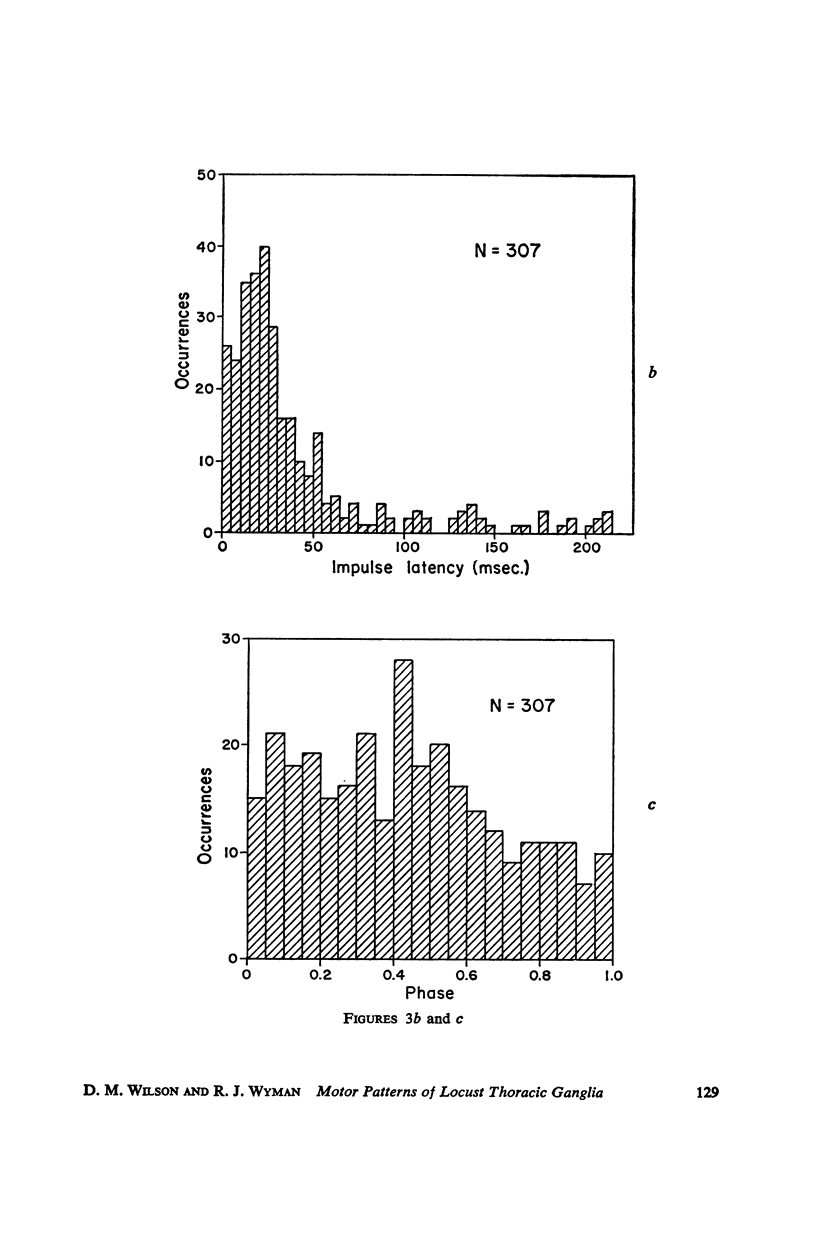

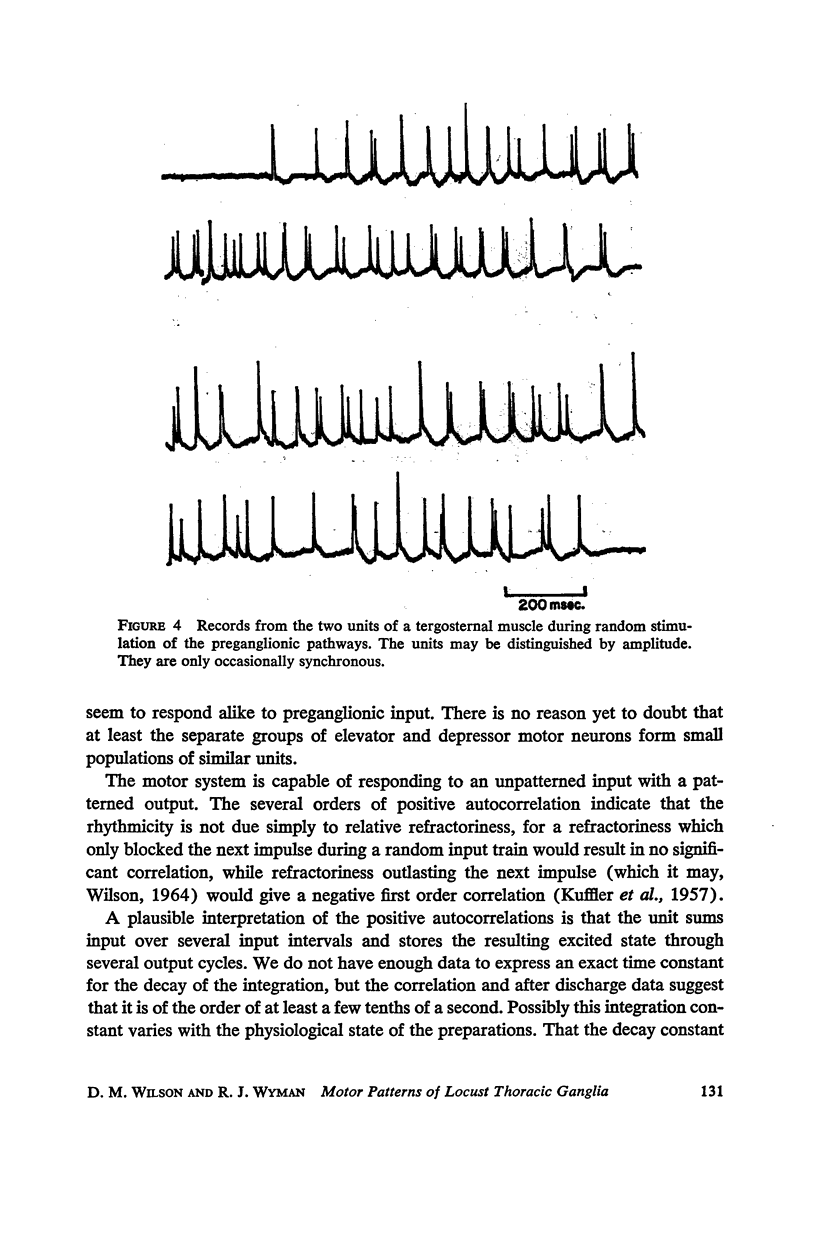

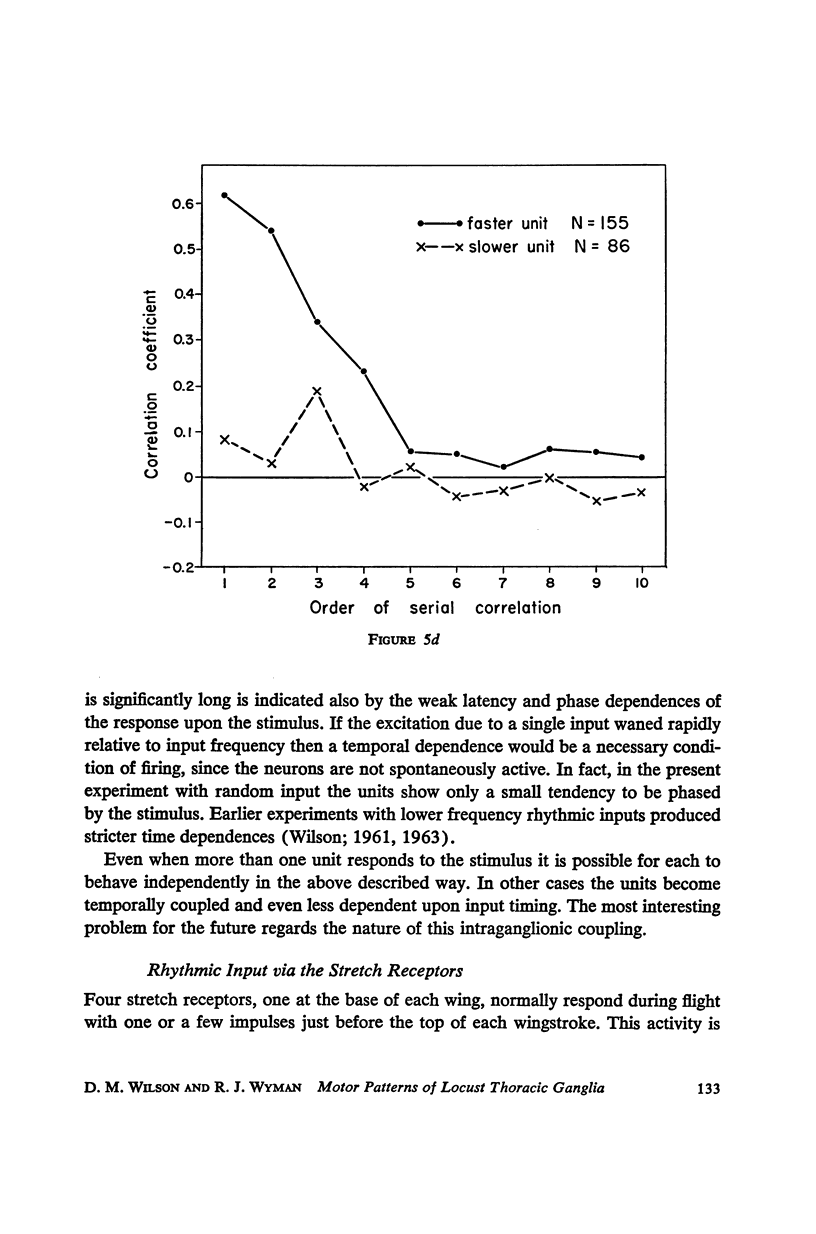
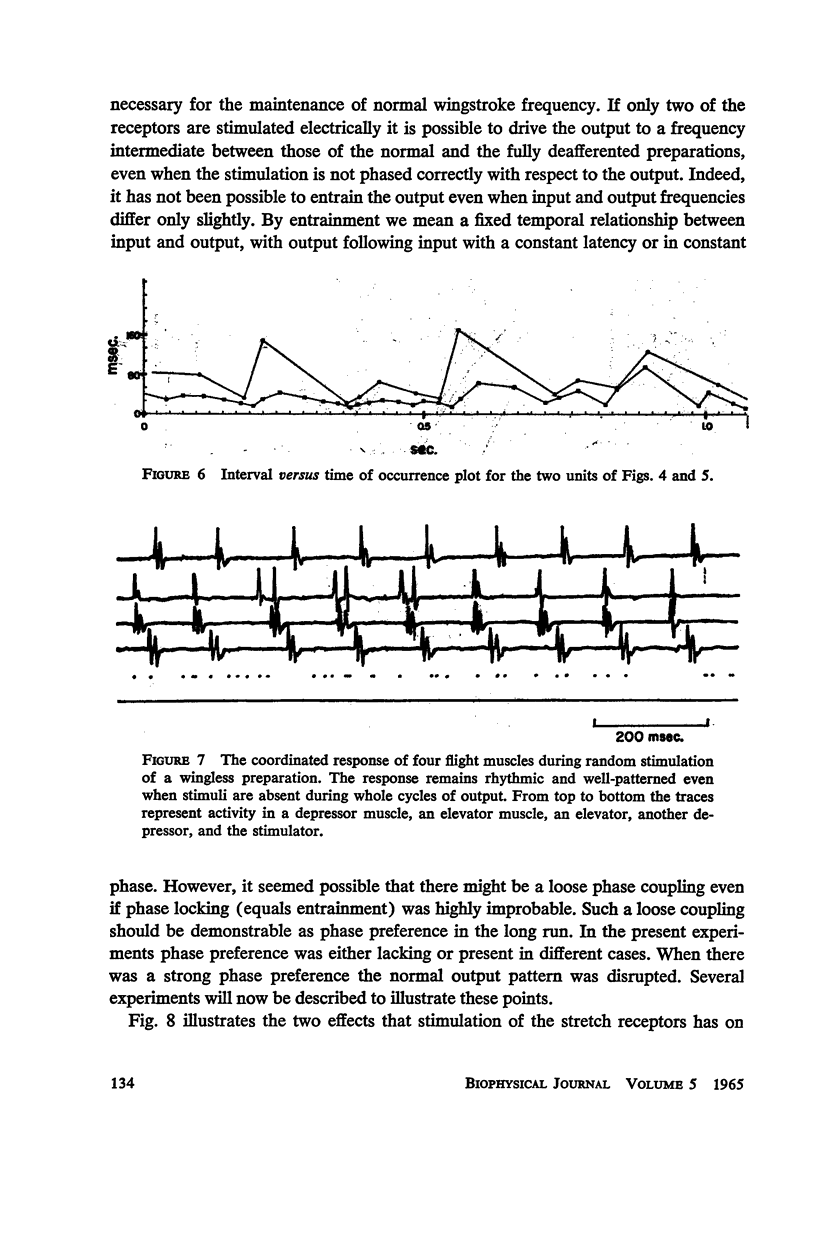
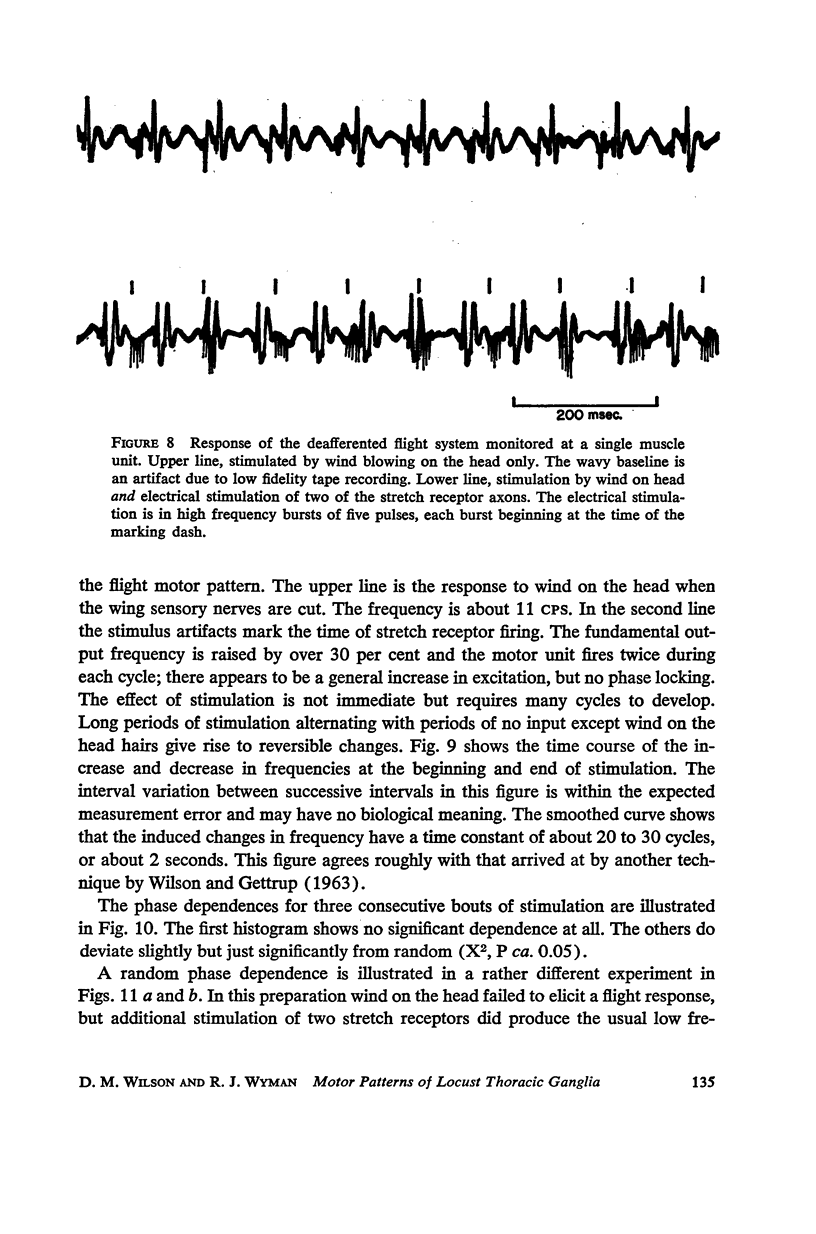
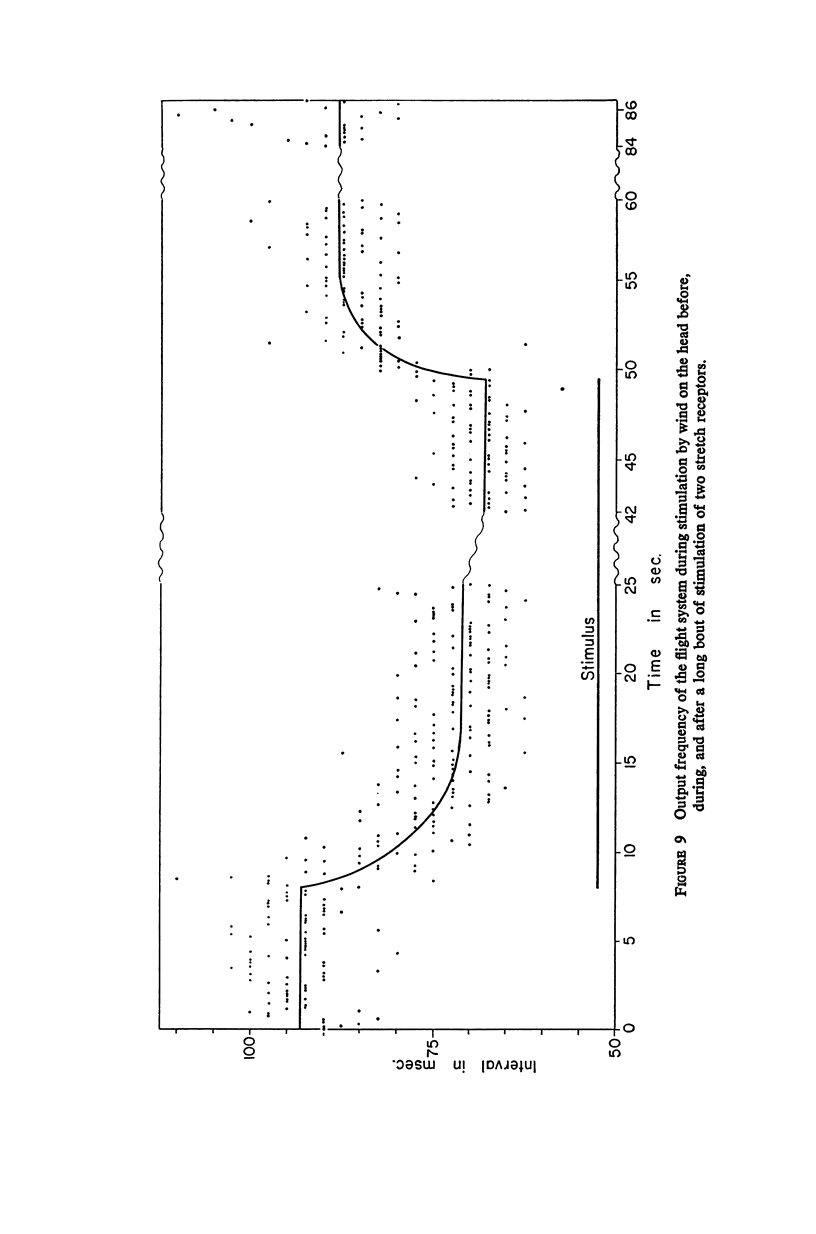
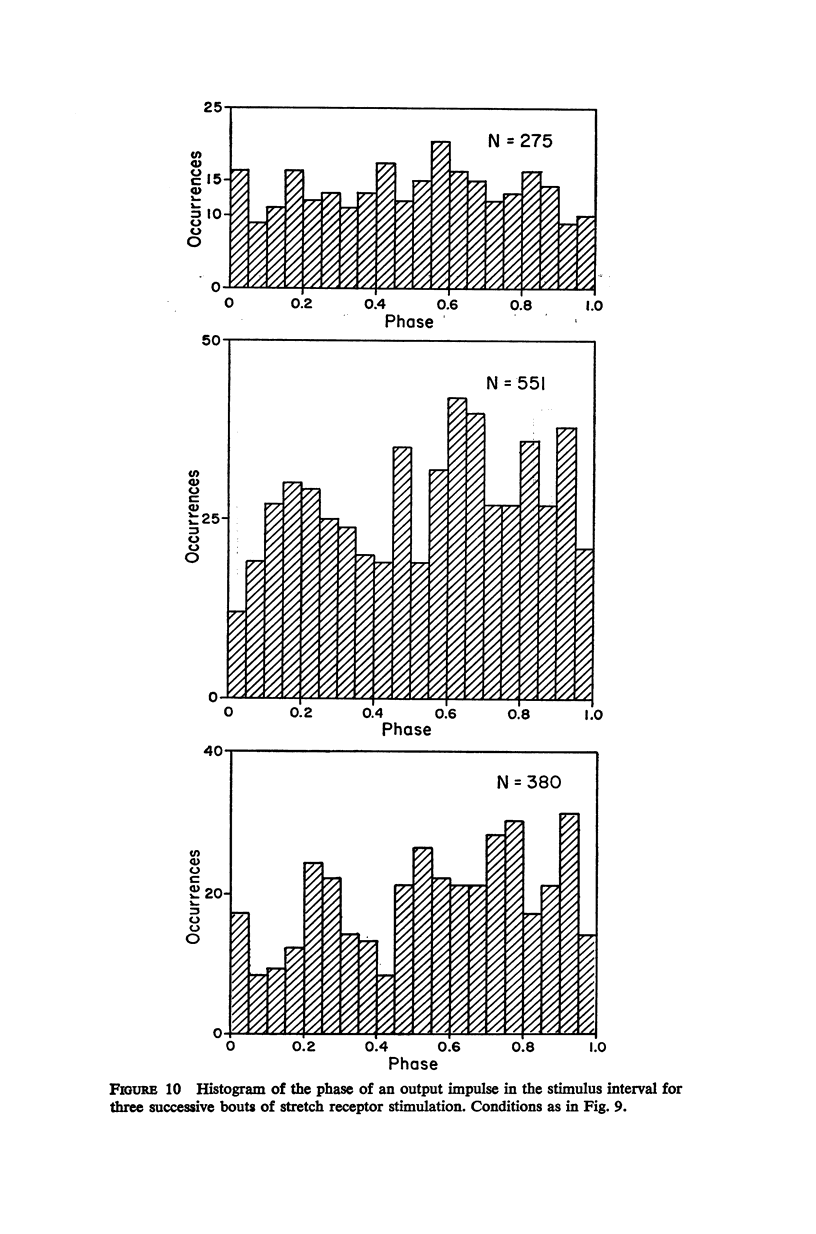
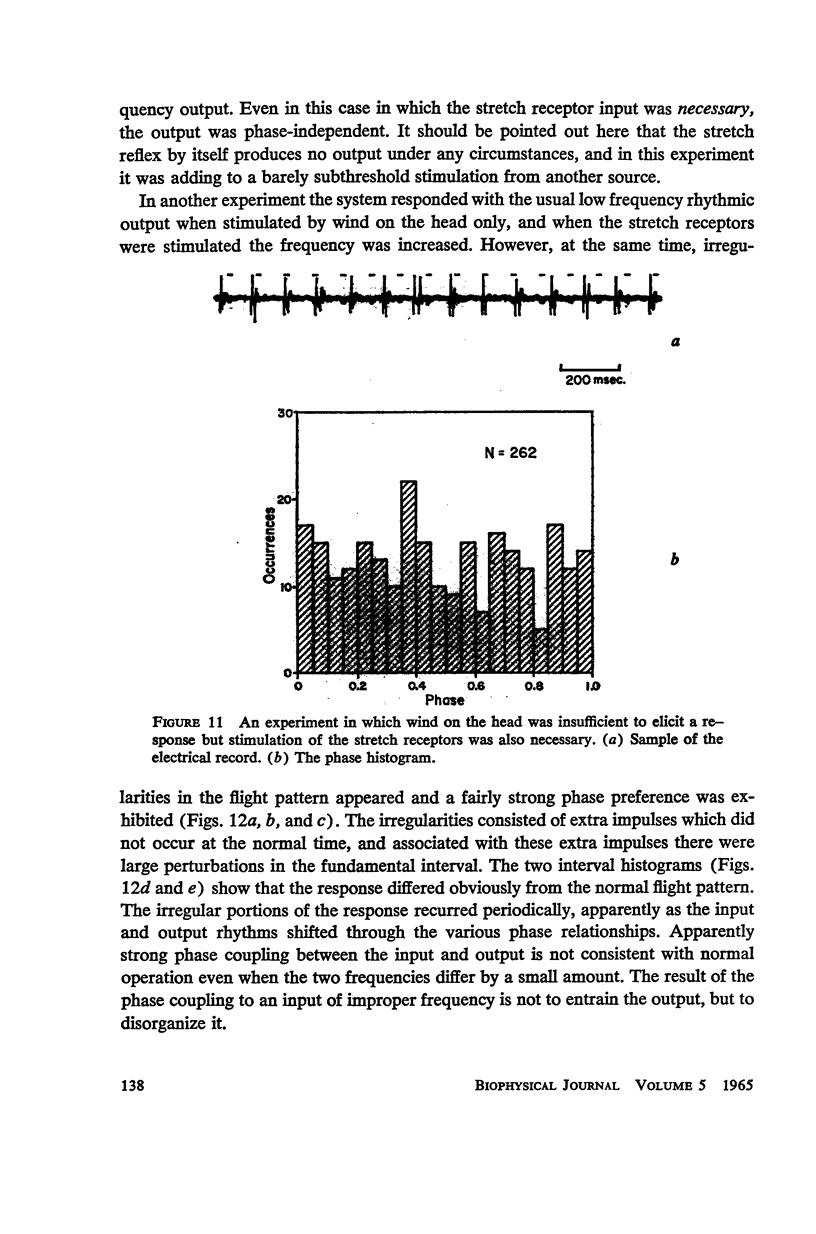
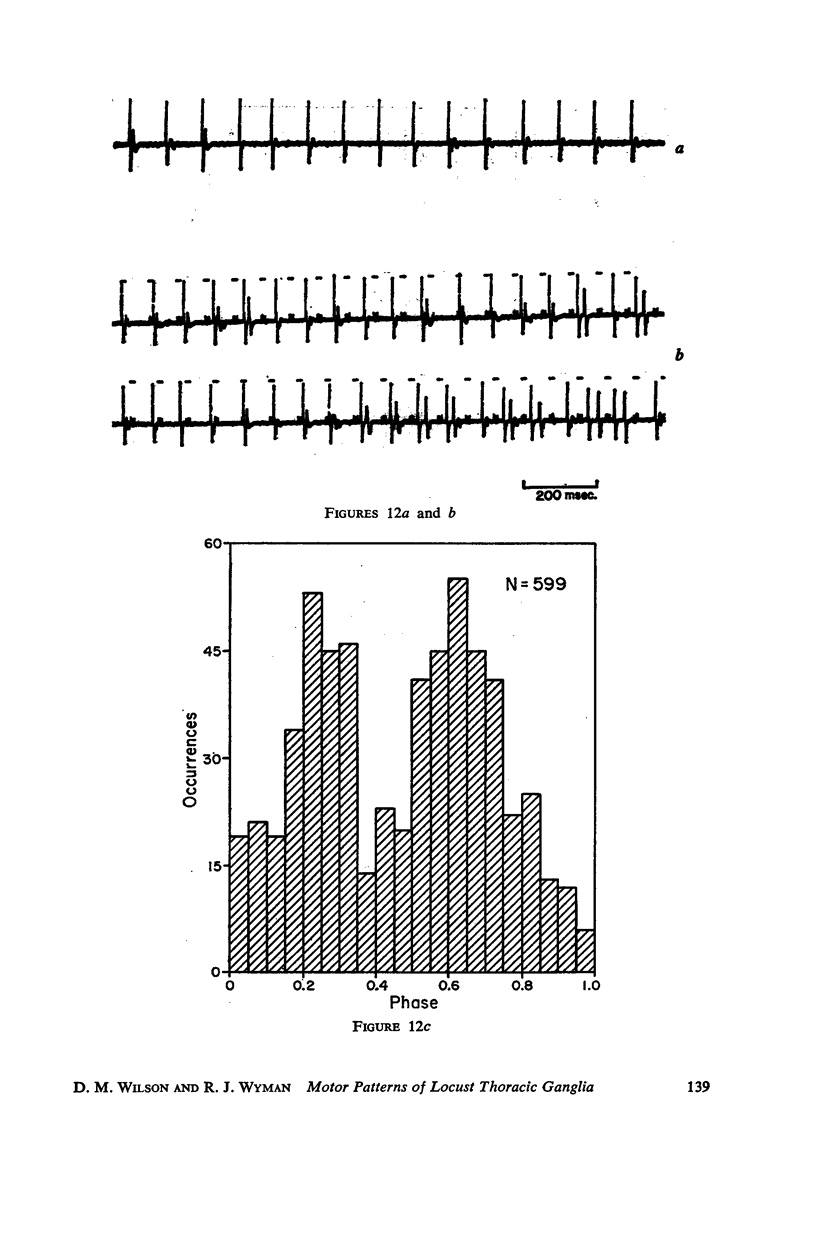
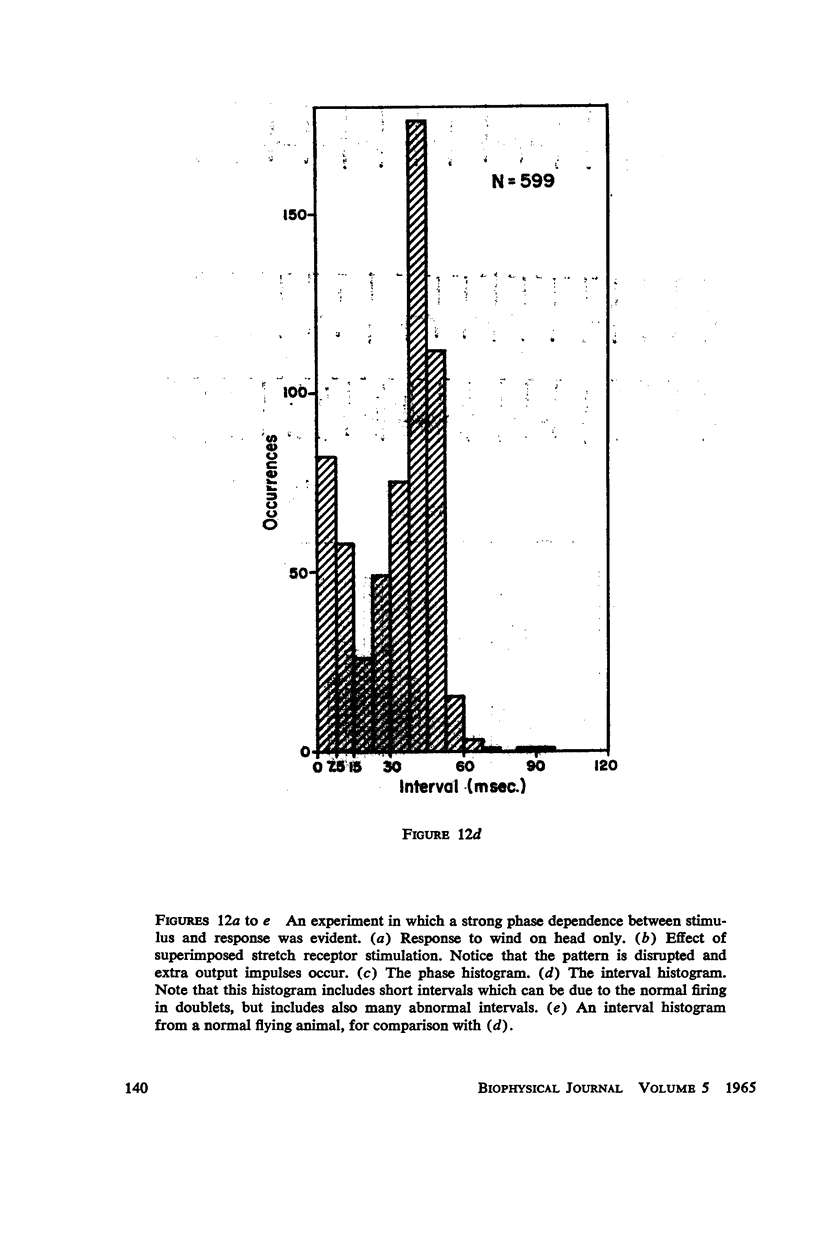
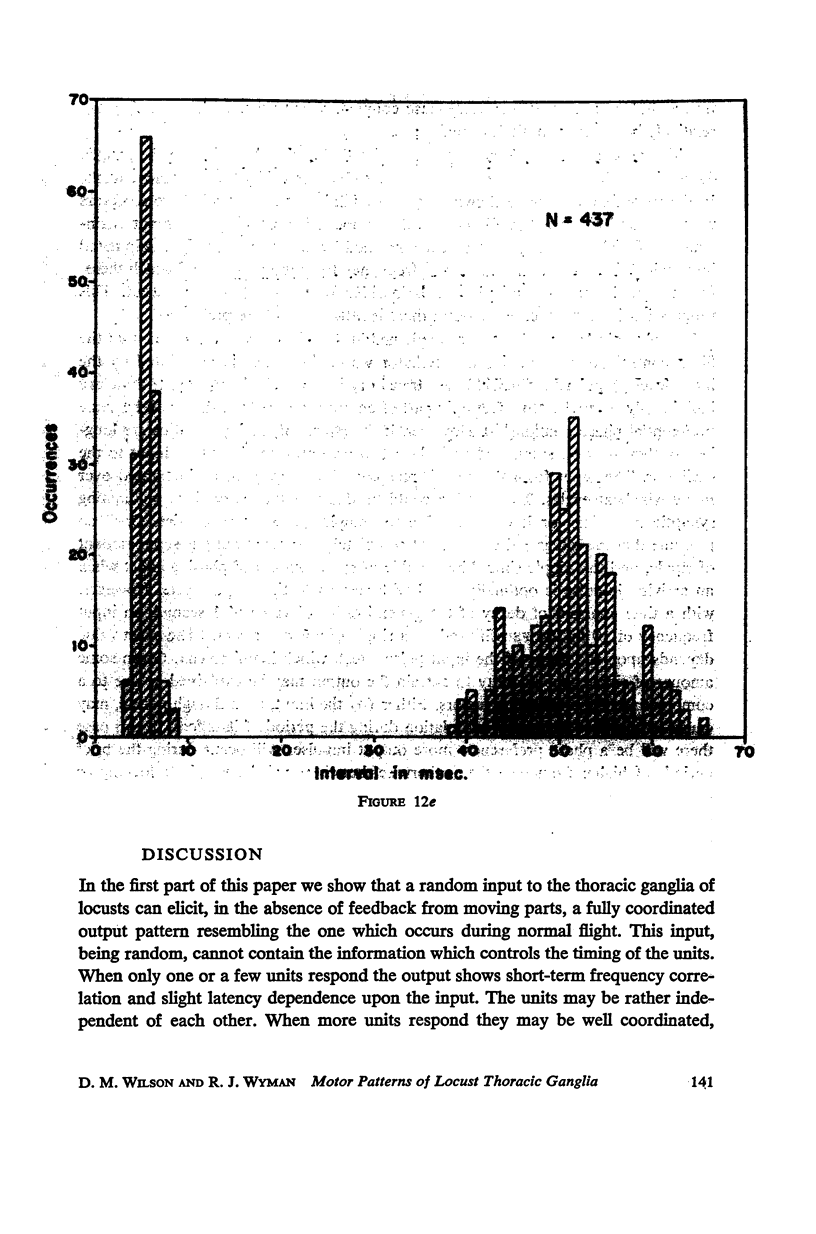
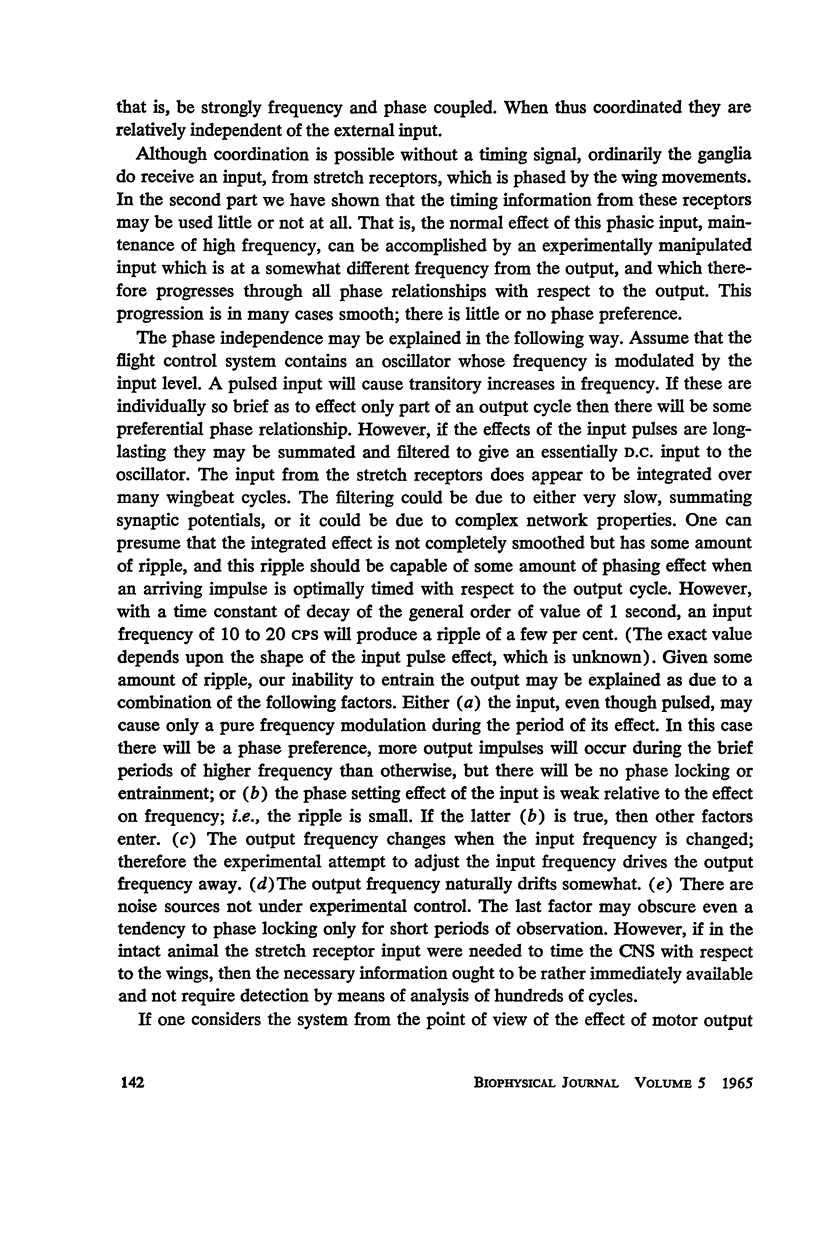

Selected References
These references are in PubMed. This may not be the complete list of references from this article.
- BULLOCK T. H., DIECKE F. P. Properties of an infra-red receptor. J Physiol. 1956 Oct 29;134(1):47–87. doi: 10.1113/jphysiol.1956.sp005624. [DOI] [PMC free article] [PubMed] [Google Scholar]
- HAGIWARA S. Analysis of interval fluctuation of the sensory nerve impulse. Jpn J Physiol. 1954 Sep 1;4(3):234–240. doi: 10.2170/jjphysiol.4.234. [DOI] [PubMed] [Google Scholar]
- KUFFLER S. W., FITZHUGH R., BARLOW H. B. Maintained activity in the cat's retina in light and darkness. J Gen Physiol. 1957 May 20;40(5):683–702. doi: 10.1085/jgp.40.5.683. [DOI] [PMC free article] [PubMed] [Google Scholar]
- WILSON D. M. RELATIVE REFRACTORINESS AND PATTERNED DISCHARGE OF LOCUST FLIGHT MOTOR NEURONS. J Exp Biol. 1964 Mar;41:191–205. doi: 10.1242/jeb.41.1.191. [DOI] [PubMed] [Google Scholar]


